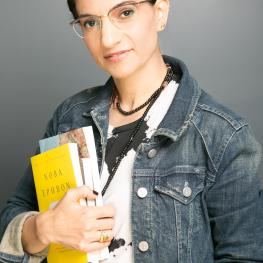Katz Center Fellow Keren Friedman-Peleg on Exploring the Socio-Political Dynamic of the Clinical Labels of Trauma and PTSD in Israel
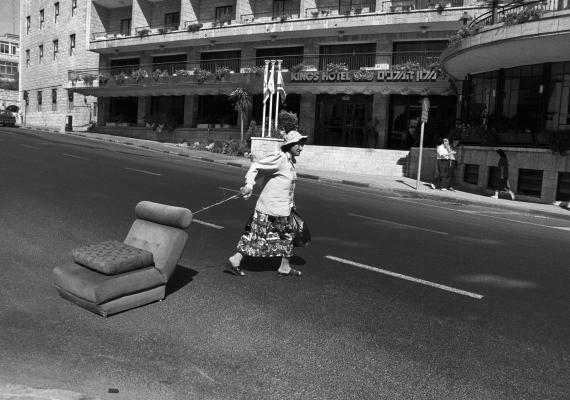
This blog post is part of a series focused on the research of current fellows. In this edition, Katz Center Director Steven Weitzman sits down with Keren Friedman-Peleg, a medical and psychological anthropologist whose research combines clinical questions of security-related trauma diagnosis, treatment, and prevention with socio-political questions of national belonging and inequality.
Steven P. Weitzman (SPW): Keren, this is a return visit for you to the Katz Center. You were also a fellow for a semester in 2015–2016, a year devoted to the theme "Jews Beyond Reason" that was meant to explore the role of the irrational in Jewish culture. Since then you've published an important and path-breaking book in English entitled PTSD and the Politics of Trauma in Israel: A Nation on the Couch. As a way to get started, can you tell us about that book and what is political about trauma?
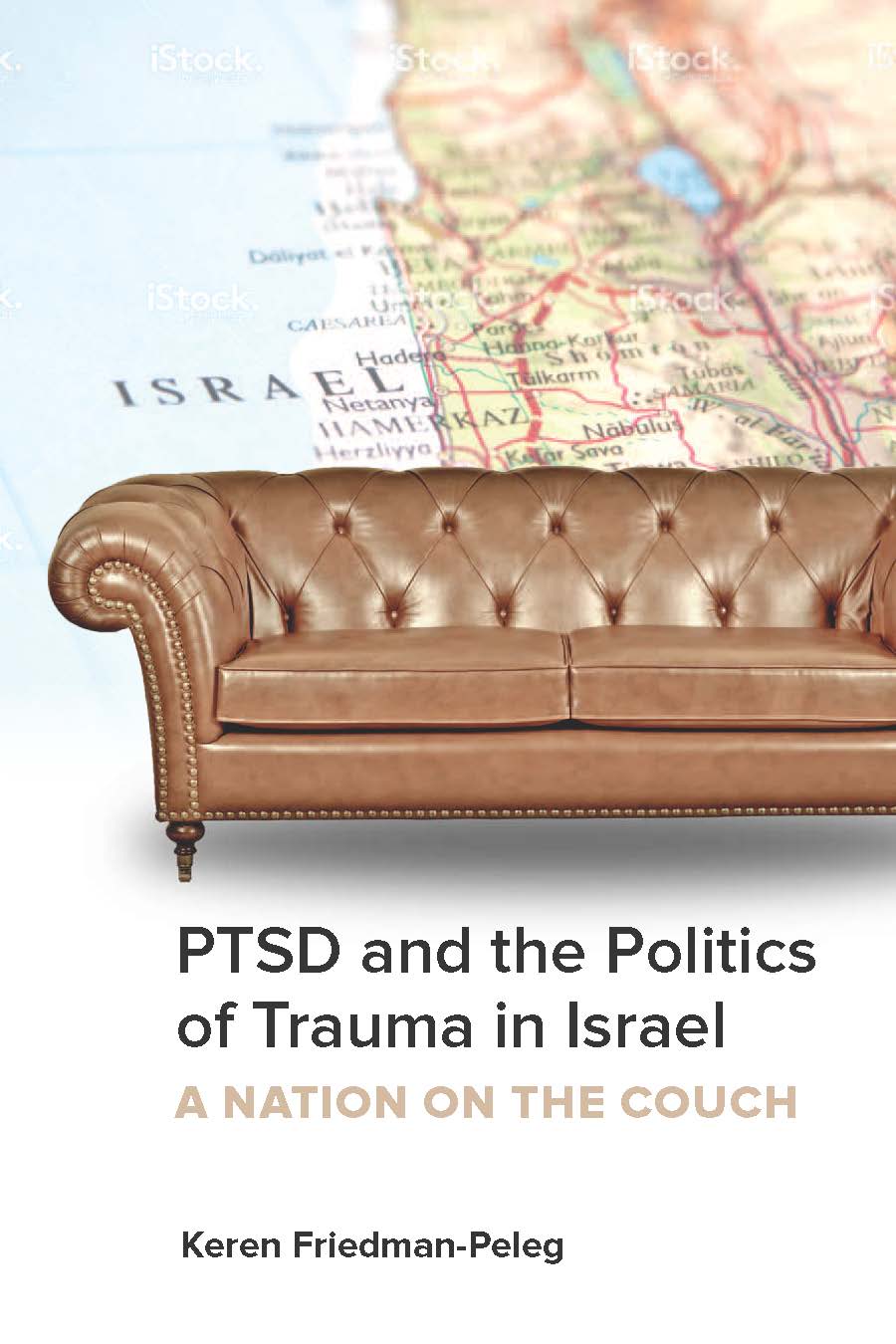
Keren Friedman-Peleg (KFP): My first book, PTSD and the Politics of Trauma in Israel: A Nation on the Couch (published by the University of Toronto Press in 2017), was based on rich ethnographic materials I collected during fieldwork conducted between 2004 and 2009 at The Israel Center for Victims of Terror and War (NATAL) and The Israel Trauma Coalition (ITC). I set out to explore the role of the professional discourse of trauma and post-traumatic stress disorder (PTSD) in shaping the meaning of being Jewish and Israeli today, under the circumstances of the Israeli-Palestinian conflict. Basically, I observed and documented psychological interventions directed toward diverse groups of Israelis, such as Israeli soldiers, Jewish-Israeli women married to men diagnosed as suffering from PTSD as a result of their military service, and the Ultra-orthodox community. The data I gathered from these and other sites revealed that clinical questions of diagnosis and the treatment and prevention of trauma were deeply entangled with political questions of national belonging.
So, for example, a prominent theme among Israeli mental health experts I interviewed was that “trauma is trauma is trauma, but…”; this “but” is exactly the political component I’ve been looking at. To explain, as one Jewish-Israeli psychiatrist told me, “Trauma is trauma is trauma, but trauma as a result of the Arab-Israeli conflict is a trauma with unique aspects, as a large part of its ‘impact’ stems from your being not just a person who lives here, [but also] you're an Israeli and a Jew. […] All of these things carry within them, at least theoretically, unique characteristics of trauma, which are to some extent part of the Israeli-Jewish identity in the Land of Israel.” This link between clinical label and social markers of collective identity is what complicates the scene, and when additional religions and ethnicities become involved (think, for example, about the members of the Bedouin community who live in the South of Israel and are exposed to rocket fire from Gaza towards Israel), the picture becomes even more complex (thus even more fascinating and thought-provoking). So, through its anthropological lens, the book expands the discussion of trauma from that of an individualized experience to one formed within multiple spheres of influence, and identifies the ways through which the professional task of treating trauma in Israel, has been shaped and fueled by Zionist ideology and Israel’s national ethos.
As implied by your question, the publication of my book and the time I spent at the Katz Center a year before were intertwined, and not only because of practical reasons. While the time at the Center allowed me to finalize the book’s manuscript, the joint experience of being a fellow at the Katz Center and publishing a book several months after, were the most powerful projection of the image of “America” I had grown up with since my childhood in a small Kibbutz in Israel—America as a dream, as a promise, as a space of creativity and open-mindedness—all of these ideals and values received a clear shape and a concrete expression. While the book served as the “text,” the time I spent at the Katz Center served as the “context,” and together created this “thick description” of my existence and experience as a scholar beyond the social boundaries of Israel. As someone who is not a native English speaker, and for whom the States was a faraway dream for many years—a wish as well as a source of fears and hesitations—being able to translate my Hebrew words (and identity) to English, both as a speaker and as a writer, represented my own takeaway of the American phrase of “from nothing to just a little something.”
SPW: I am so gratified to hear what the Katz Center experience meant to you, Keren. I am curious whether you've received any feedback from mental health care professionals, from those you've worked with or others. How do they respond to your analysis of trauma? Does it change what they do to be able to understand that the experience of trauma can be shaped by one's culture and particular political position?
KFP: Actually, this question takes me back to the very heart of anthropology, and to the unique dynamic surrounding its cornerstone: fieldwork, a methodological tool based on participant-observation. More than any other methodology I am familiar with, this combination of “observation” with “participant” requires a high level of trust and even intimacy with the people you are focusing on, and it depends on your ability and their willingness to be involved in the most powerful form of human communication: dialogue. By its very nature, the ethnographic quest I defined to myself—to explore the socio-political dynamic surrounding the clinical labels of trauma and PTSD in Israel—had an inherent challenge. After all, and like other experts in modern society, those involved in providing psychological aid usually perceive themselves, and are perceived by the public, as being highly autonomous in the means by which they determine to whom and how they, as experts, should provide professional support. For an outsider, as myself, to gaze upon the daily activities of this exclusive community was by no means an easy task.
All in all, this task was made possible due to the personal relationships I gradually developed with the trauma experts I met at NATAL, ITC, and other professional platforms. Initially, our contact was primarily contractual: the anthropological viewpoint turned out to be of intriguing promise to mental health experts who had spent most of their professional lives either within the closed confines of the clinic, and/or dealing with quantitative research—the common methodology in the fields of psychology and psychiatry. I offered them what people are often lacking and which lies at the heart of anthropological research: time—my time, together with documentation and interpretation. This was, and still is, the essence and the context of our dialogue, and of our relations. This is also why, in contrast to the tendency to distinguish categorically between those who have the knowledge and power and those who do not, I felt not only a moral obligation to the people I met with, but also an intellectual commitment to academic standards, to remain sensitive to the social circumstances under which the therapeutic interventions took place. The complexity of dealing with trauma under the particular circumstances in Israel demanded that I not assume in advance the existence of categorical relationships between aid providers and aid receivers, but rather required me to conduct my ethnographic research while seeing the mental health experts as “social players” operating under social limitations, and remaining aware of the flexibility and creativity they express while handling painful traumatic experiences. I think that this initial methodological standpoint allowed me, then as today, to keep this “dialogical mode” of communication with those who deal with trauma as mental health experts, as an integral part of my fieldwork and writing. So, while I don’t think I had or have a direct influence on the professional attitude towards trauma among those experts I’ve met, I deeply believe that this dialogue I’ve been conducting with them, as any other dialogue human beings are involved in, has the potential to expand points of view, and to offer a broad perspective. And if so, and if indeed, that is so valuable, and not a taken-for-granted aspect of our daily life, that is enough.
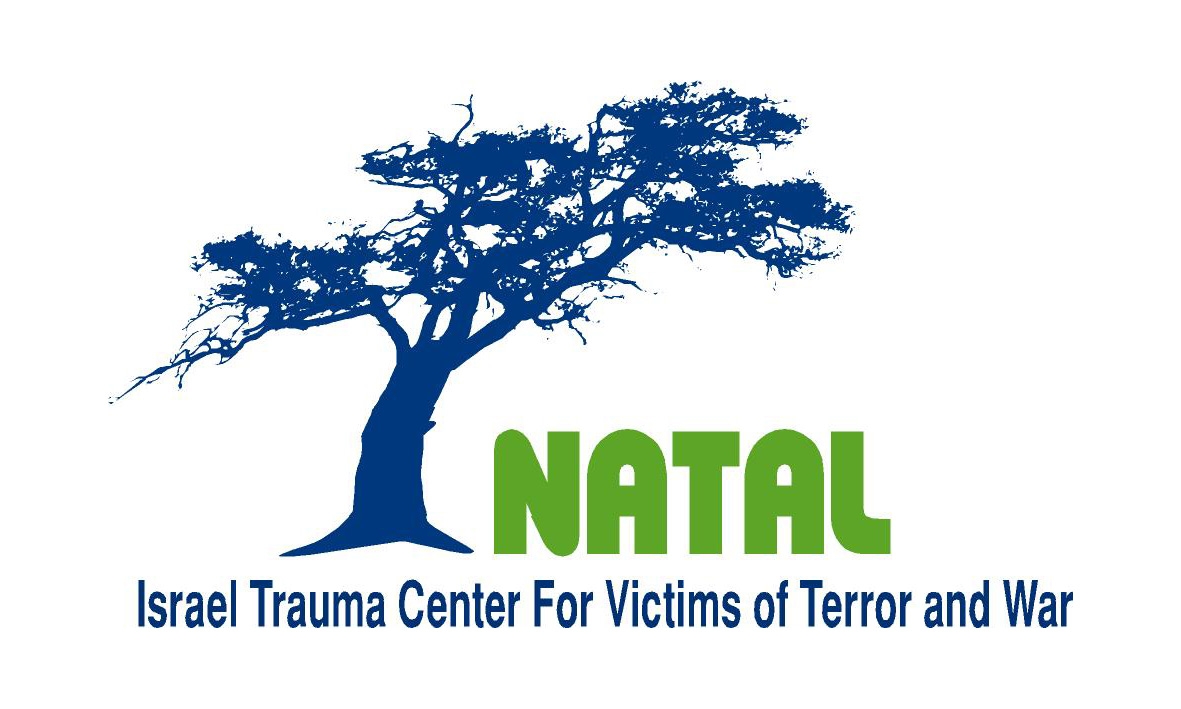

SPW: I could spend a long time exploring your earlier work, but let me shift to the present. Now that you are back at the Katz Center to work on a new project, can you tell us about it, and what led you to it?
KFP: My current project—Building Resilience: Negotiating Threatened Experiences of Home and Belonging on the Border of Israel and Gaza—examines a critical, contemporary ramification of the entanglement of trauma discourse and Zionist ideology: a new Israeli government aid policy framed as “building resilience,” targeted toward communities living along Israel’s southern periphery. This project is based on fieldwork I conducted between 2017 and 2019, and included in-depth interviews with more than 35 practitioners and mental health experts involved in establishing and operating new aid platforms referred to as “resilience centers,” participant observations at professional gatherings and therapeutic interventions, and analysis of official documents, classified and non-classified.
Based on this rich empirical data, my project follows two primary lines of inquiry: the first examines the new aid policy from a “top-down” perspective, focusing on the discursive practices and channels of intervention utilized by governmental agencies in the deployment of the psychological principle of “building resilience.” The second offers a “bottom-up” perspective, shedding light on the role of the aid policy as a catalyst for negotiation between Jewish-Israeli mental health experts, local practitioners, and residents in Israel’s southern periphery over diverse lived experiences of home and belonging. Specifically, it details through in-depth accounts, a significant consequence of the efforts of Israeli authorities to build resilience as a highly structured, fixed “one-size-fits-all” intervention, as local practitioners and residents struggled to come to terms with the psychological equation of resilience-against-trauma. So, what I’d like to suggest is that within the context of mental health support, negotiations among diverse participants opened novel opportunities for local residents to share their lived experiences of home and belonging, bringing new, less familiar voices into the mainstream discourse on national security in Israel. These voices, as I aim to show, emphasized additional, long-term sources of violence and trauma beyond the threat of rocket attacks, produced from the very inside of what are assumed to be safe zones: the national and private home.
SPW: I imagine it’s very difficult to do ethnographic research in such a tense context shaped by violence, suspicion, and fear. Am I right in that assumption? What are the challenges of doing research in this kind of setting?
KFP: Contemplating this question while here, at the Center and at Penn, and far from home, and especially given our annual theme at the Katz Center—the Jewish Home—I have come to the understanding that my field is my home, and vice versa: my own home is my field. Thinking about violence, suspicion, and fear, and even more so, thinking about competing narratives, and sometimes contradicting experiences of violence, suspicion, and fear is, basically, to think about my childhood. I was born and raised in Lehavot Haviva, a small Kibbutz in the north of Israel—a little dot on a little dot on the map—but as many other “dots” on the Israeli map, there is a huge political drama behind it. My Kibbutz, as many other Kibbutzim in Israel, served as a “socio-political hub” of the Zionist ideology. The Kibbutz was the place where the “pioneering mentality” of Israel and the collective values of Israel were put into practice: we ate in a communal dining-room, we slept in the children’s house, separated from our parents, we grew up while learning, time after time, that the “group,” the “community,” the “nation” is much more important than we, as individuals, were; and all of us, without exception, served in the Israeli military.
We grew up highly aware of the fact that our Kibbutz was established in 1947 by Jewish immigrants, all of them Holocaust survivors; we grew up highly aware of the fact that the Kibbutz was established near what later was named the “green line,” the demarcation line set out as a part of the agreements between the armies of Israel, Egypt, Jordan, and Syria, after the war of 1948. At the same time, we grew up highly aware of the fact that in 1951 the Kibbutz was moved three kilometers east to its current location, and we knew that this piece of land had previously been a Palestinian village named Al-Jalama. We grew up highly aware of the fact that after the War of 1948, Israel emptied al-Jalama—the Palestinians who lived there were expelled by the Israeli military. And we even knew that, in fact, the Palestinians petitioned the Israeli Supreme Court for permission to return, which was actually granted in June 1952. However, as the remaining houses in al-Jalama had been destroyed, the Palestinian landowners never returned.
So, I think you can see why and how I am the story I am telling; I am not an anthropologist who conducted fieldwork in a remote location, studying the “exotic” other. Instead, my own “home,” with this multi-layered narrative of trauma, is also my own “field.” What it means to be a Jewish-Israeli today, under the conditions of violent and unresolved conflict—and how the emotional experience of trauma has come to shape our identity as Jewish in Israel—is a question that I’ve been considering, studying, and contemplating on a daily basis. This is the main challenge—to offer an “external” observation on a daily reality, which, in fact, you’re “inside” all the time—as well as the main promise: to be able to dwell in this inevitable mix of the “inside” with the “outside,” a mix that I believe allows me, as many other anthropologists in Israel and around the globe, to deliver the anthropological “good,” to offer a critical yet sensitive analysis of pieces of our daily life.
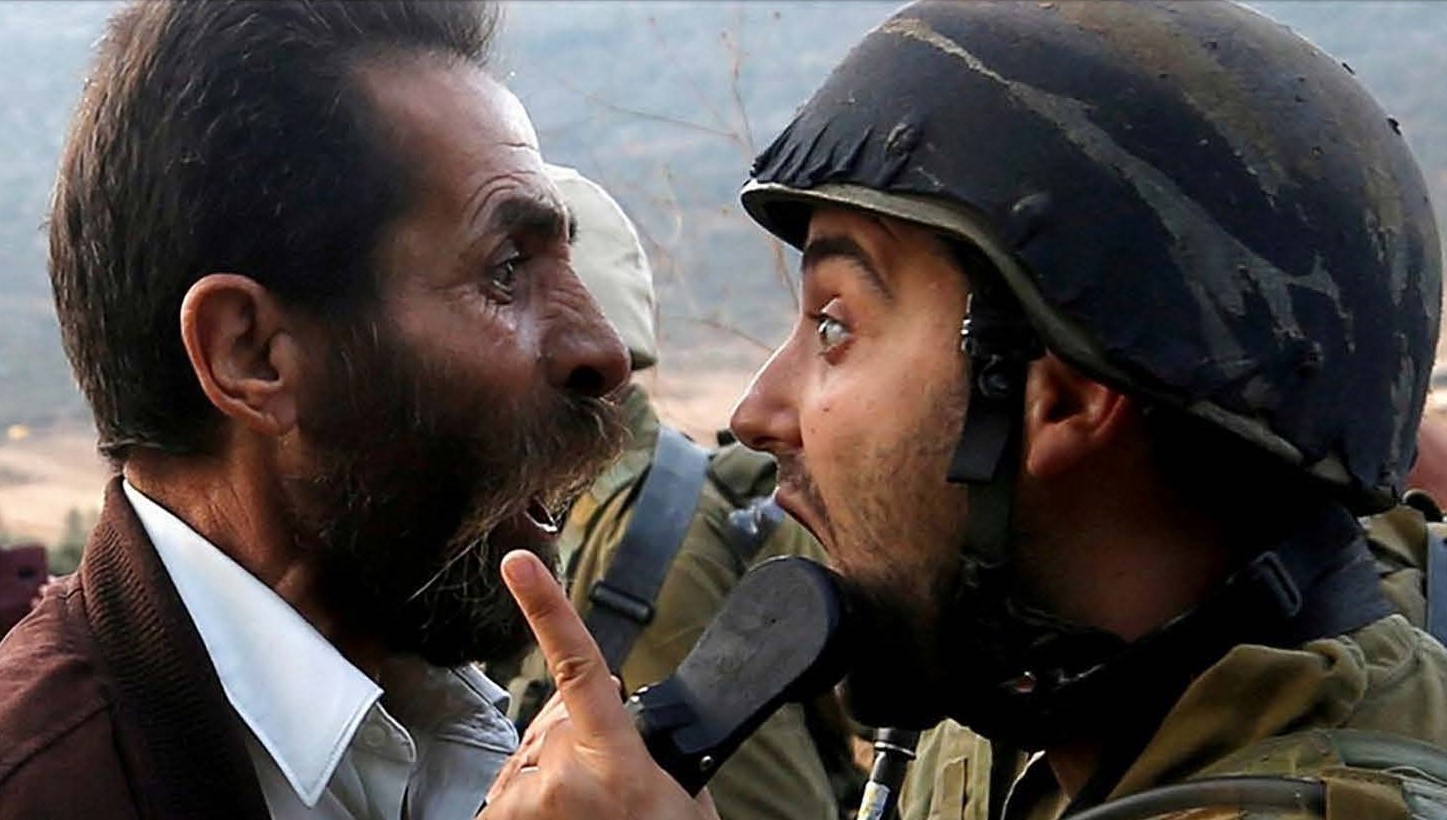
SPW: Penn is famous for research related to your topic, research on topics like resilience. I know you are an anthropologist and not a psychologist, but does your research have implications for how psychologists or those who look to psychology should understand traumatic experience?
KFP: More than anything, with my students here at Penn, with the students I met at UC Berkeley a couple of years ago, with my Israeli students, as well as with my colleagues, my goal is to open up a conversation about psychology and about psychiatric classifications, and what all of that means to all of us, as individuals and as members of our communities. I am not asking to question any kind of professional logic behind the multiple approaches for treating traumatic and post-traumatic symptoms, nor to challenge the empirical logic behind the diagnostic category of PTSD. This would be much too pretentious and overambitious, and therefore unprofessional at this point in time when trauma, as the American anthropologist Tanya Luhrmann argued, has come to be “the greatest psychiatric narrative of our era.” What I do want and try to achieve, is to invite my students, as well as my colleagues, to think about psychology, using one of Clifford Geertz’s concepts, not only as a science but also as a “system of meaning.” That means that in addition to scientific-oriented questions that have been asked from the very “inside” of the psychological-psychiatric fields—such as how we should treat a person who suffers from traumatic memories (by interventions based on the CBT approach? psychotherapy? medications) or which treatment would be more effective—we pay attention to socio-cultural questions that emphasize the powerful, yet sometimes neglected dimension of meaning. What does it mean for this specific person to be diagnosed as suffering from PTSD? What does it mean for his/her loved ones? What does it mean for him/her to be defined as a “patient?” To define his/her memories as “trauma?” To give them a specific psychological label? Bringing these questions to the table, with the diverse, sometimes surprising and contradicting answers people might provide us, allows us not only to facilitate an intellectual conversation between anthropologists and mental health experts, but also, and as a result, to create a deeper understanding of traumatic experiences and their role in shaping individual and collective identities.
